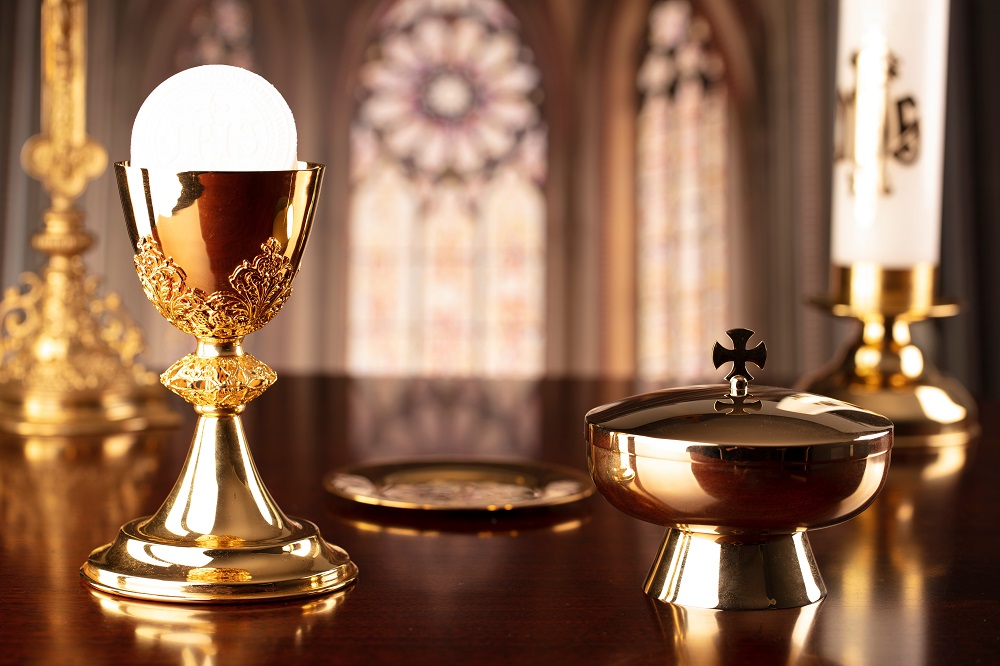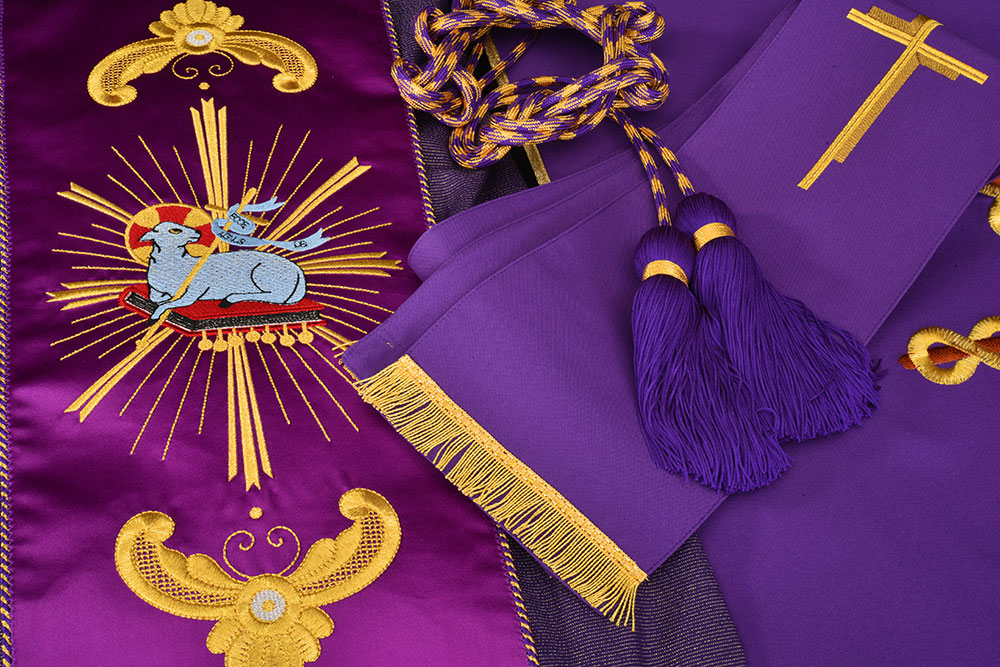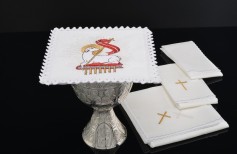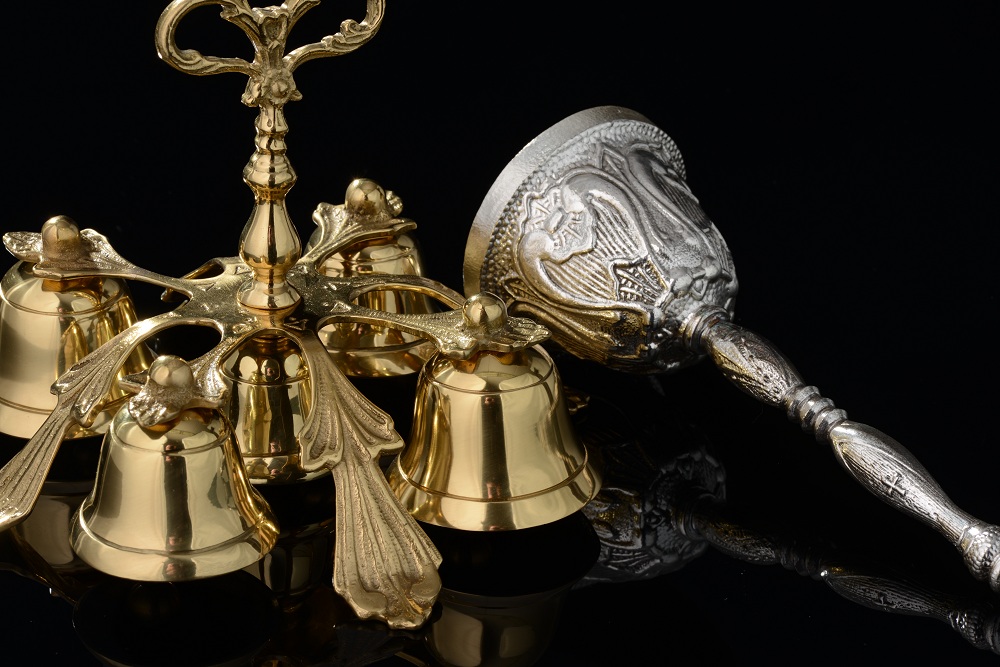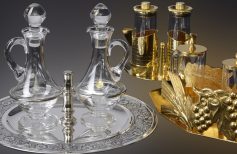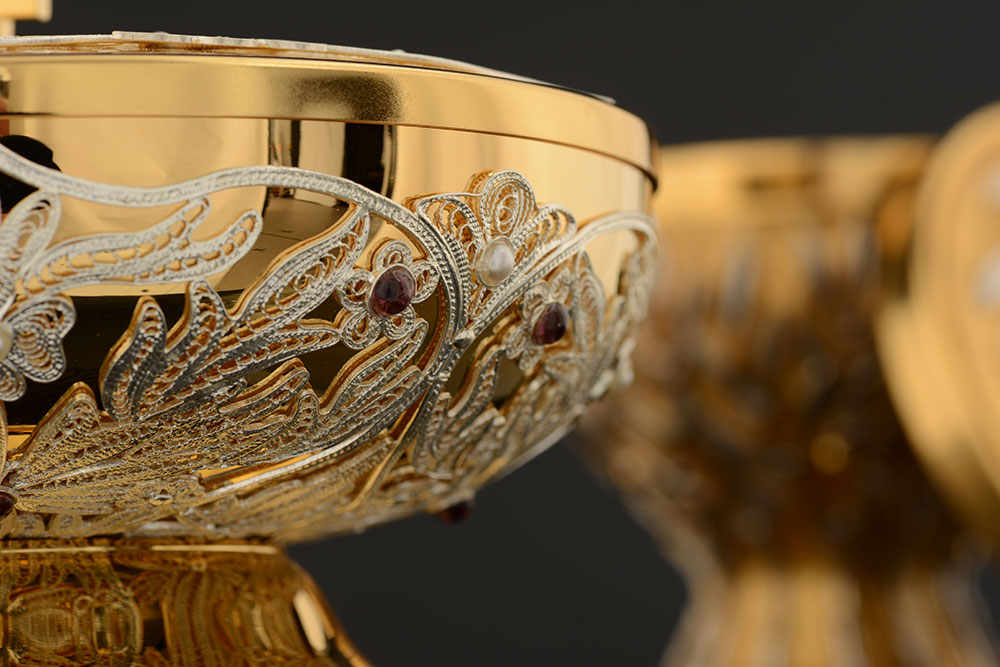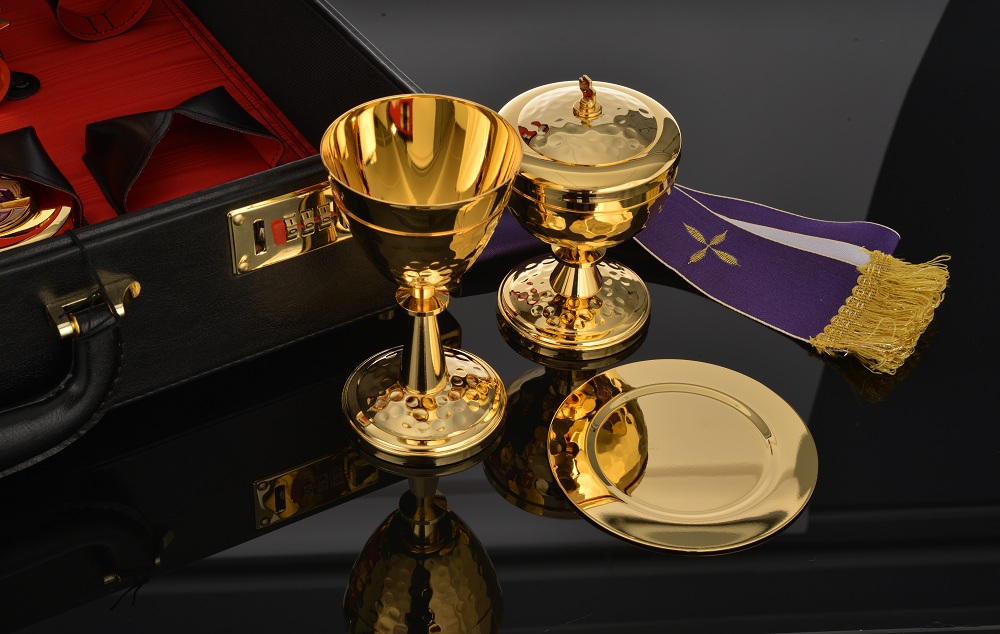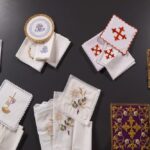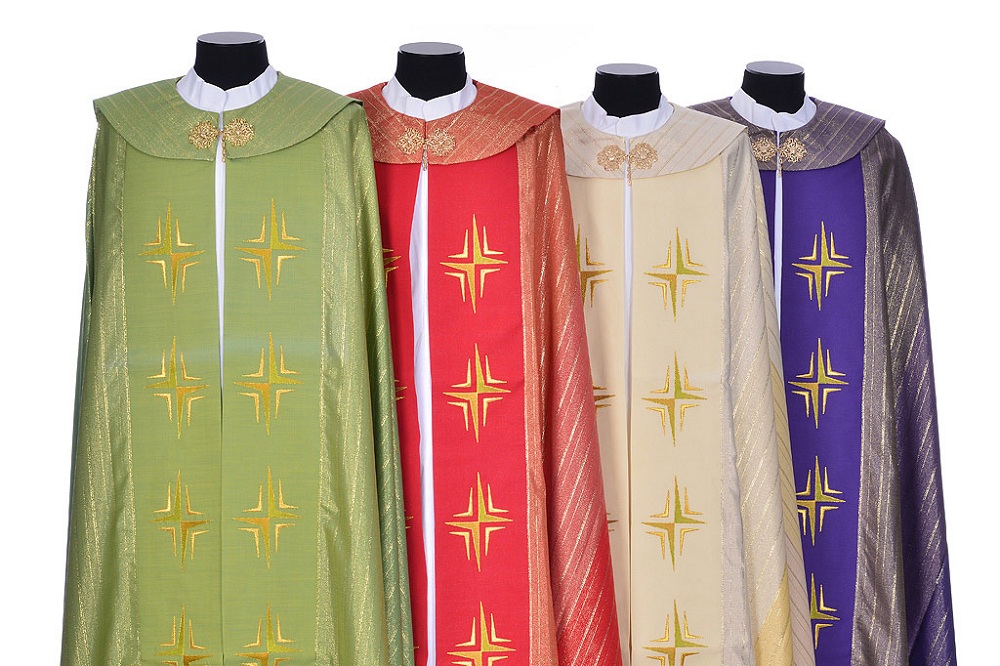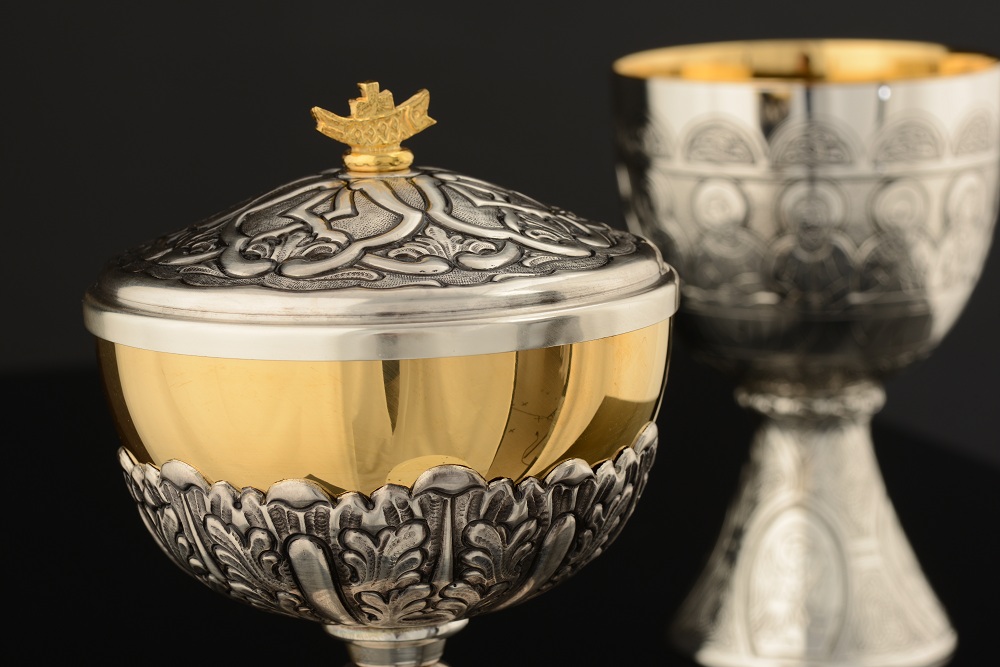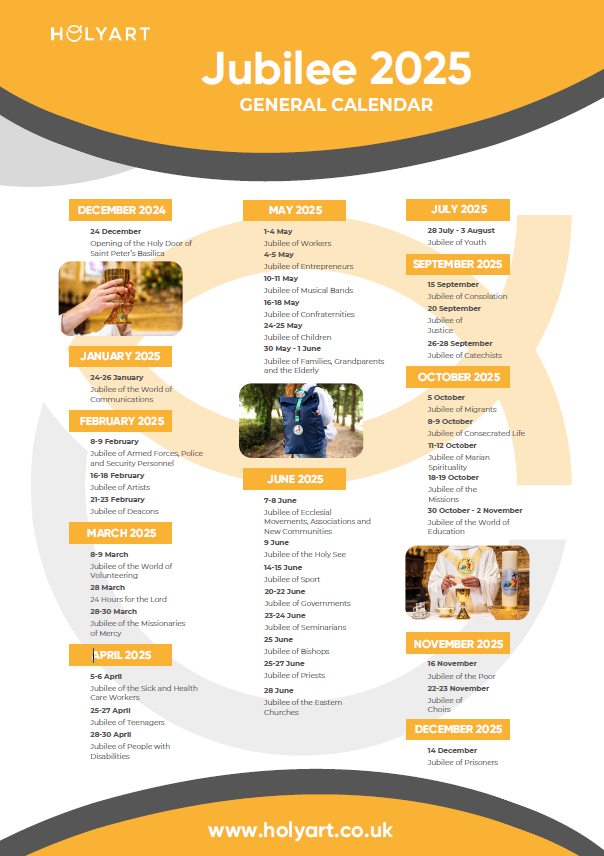Liturgical accessories are a fundamental part of the celebration of Mass. However, they require frequent cleaning and specific care. Here’s how to keep them clean without damaging them.
Contents [hide]
The Catholic liturgy is not only made up of ceremonies, rituals, and traditions codified over the centuries. It also involves objects, known as liturgical accessories, used during celebrations by the priest and those assisting him. These are smaller than sacred furnishings, such as the altar, the Tabernacle, the lectern, the pulpit, and the baptismal font. Nevertheless, liturgical accessories are essential for the celebration of Mass, particularly for the Eucharist and the preservation of the Blessed Sacrament. Consider, for example, the chalice for Mass, used to hold the wine consecrated by the celebrant, or the ciboria for holding consecrated hosts, and other sacred vessels such as the paten, the small plate on which the priest places the host, or the cruets containing water and wine for the Mass.
Liturgical chalices and other accessories also serve to adorn the altar and the church.

Sacred furniture: typical decors of every Christian church
The church is the place par excellence where Christians gather to share their faith and celebrate the related solemn rituals…
For this reason, since ancient times, precious metals and materials have been used to create liturgical accessories, particularly those that come into contact with the bread and wine. The Redemptionis Sacramentum, an instruction issued in 2005 by the Congregation for Divine Worship and the Discipline of the Sacraments, describes in detail how the Eucharist should be conducted, from the use of the paten during Communion to prevent particles from falling, to the materials to be used for liturgical chalices and other accessories. For example, the Communion chalice must always be made of precious metal, such as gold or silver, or at least have a gold interior. In the past, the metal was gilded through hot lamination, a process that fixed a layer of gold onto the surface of a less noble metal. However, this method involved the use of highly toxic and polluting substances, such as cyanide and mercury. Today, electroplating is used, which, as we will see, is also useful for maintaining liturgical objects, although the adhesion of the gold layer is less robust.
Liturgical objects are carefully stored in the sacristy, where they are cleaned, prepared, and consecrated before use.
Here’s how to clean the metals and other precious materials these objects are made from.

Sacristy: what it is and its function
The sacristy is a service room used primarily for priests to vest, but it serves many other important purposes.
How to clean metal chalices
First of all, consider that since the alcohol in the wine is corrosive to the gold or gilding that lines the interior of the Communion chalice, the wine should only be poured at the moment of the Eucharist, never before. After use, the priest himself pours a few drops of water into the chalice and cleans it with a specific cloth called the purificator. Once the chalice is brought back to the sacristy, a second cleaning can be done with a soft cotton or microfibre cloth, avoiding the use of alcohol or aggressive detergents.
If the chalice is made of pure gold, it won’t require excessive maintenance: water and mild soap will be sufficient to remove more stubborn dirt, and a soft microfibre cloth will restore the object’s original shine. However, it’s extremely important to always dry liturgical accessories thoroughly.
Avoiding aggressive detergents is crucial because many liturgical accessories are made from less precious metals, such as copper and brass, which are then treated through electroplating. This process involves immersing objects in aqueous solutions containing metal salts to improve their appearance, renew them, and make them more durable. It not only coats the objects with a layer of gold or silver but also prevents or repairs damage caused by wear and time, eliminates oxidation, and revitalises the metal.

How to clean silver chalices
We have already dedicated an article to cleaning silver, specifically jewellery. However, when it comes to sacred vessels and liturgical accessories, it is even more important to know how to clean silver and, above all, what not to do to avoid damaging such valuable objects.
Over time, silver tends to lose its shine and darken until it turns black. This process, called oxidation, occurs because the silver used for sacred vessels is not pure but mixed with other metals, such as copper. These other metals oxidise, causing the blackening of the objects, which is also influenced by the sweat of those handling them, humidity, and similar factors.
If you’re wondering how to clean tarnished silver, the first thing to do is avoid chemical products, which can burn the metal while removing tarnish and cause stains.

How to clean silver jewelry
Since ancient times, silver jewels have exercised a deep fascination. Let’s find out how to clean the silver jewelry to keep them bright and beautiful.
Similarly, while bicarbonate is useful for small jewellery items, it can be counterproductive when polishing the metal of sacred vessels. These objects, especially if antique, often feature patinas and finishes that could be damaged or removed by scrubbing with water and bicarbonate. You could end up with a clean and shiny chalice but lose the relief effect created by the characteristic patinas of this material.
It’s better to rely on a specialised workshop capable of restoring liturgical accessories to their original splendour without using overly aggressive treatments.

How to clean wooden chalices
As mentioned earlier, the interior of sacred vessels, the part that comes into contact with the consecrated wine or host, must be made of gold or at least gilded. However, some liturgical objects may have an external structure made of wood.
In this case, the same principles apply as for any kitchen utensil or tableware made of wood. Wood is porous, so it tends to absorb water and, over time, deforms and loses its colour. Use only a minimal amount of lukewarm water, without chemical detergents. At most, you can use a little Marseille soap or, even better, salt or vinegar. Rinse thoroughly and dry carefully to prevent stains or mould from forming.

Metal or olive wood? Check out Holyart chalices, pyxes and patens.
Chalices, pyxes and patens. In short: sacred objects.

